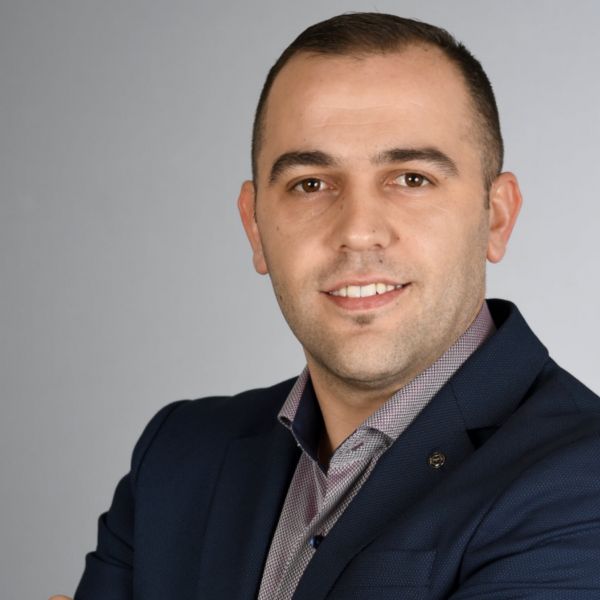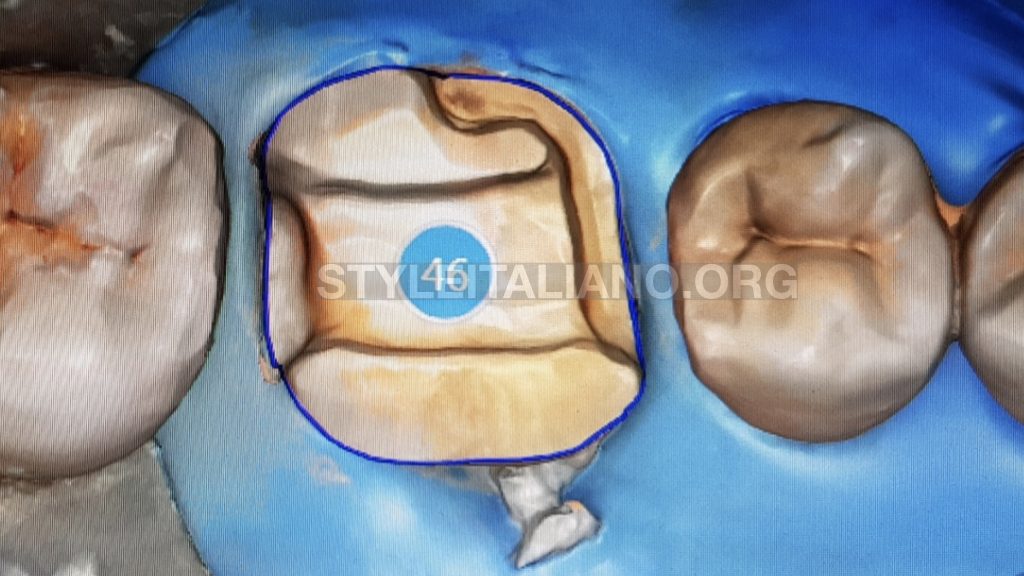
The use of CAD/CAM technology in the restoration of endodontically treated teeth
19/07/2020
Fitim Shabani
Warning: Undefined variable $post in /var/www/vhosts/styleitaliano-endodontics.org/endodontics.styleitaliano.org/wp-content/plugins/oxygen/component-framework/components/classes/code-block.class.php(133) : eval()'d code on line 2
Warning: Attempt to read property "ID" on null in /var/www/vhosts/styleitaliano-endodontics.org/endodontics.styleitaliano.org/wp-content/plugins/oxygen/component-framework/components/classes/code-block.class.php(133) : eval()'d code on line 2
Due to the biological and structural changes that the tooth undergoes during endodontic treatments,in principle it is mandatory that the teeth should be covered with a crown. The exceptation of this rule is mentioned in the first part of the article (direct restoration of endodontically treated teeth)
In the indirect restorations we have to consider several aspects:
- If two or more walls are missing: it is an indication for indirect coverage
- If an indirect restoration is difficult due to a lack of substance, then a post should be considered.
- In the most difficult cases a multidiciplinary approach is needed
- Choosing the appropriate material for that case

Fig. 1
this patient was reffered to me, due to the composite infiltration, for this reason the patient was scheduled for a retreatment, probably infiltrated.
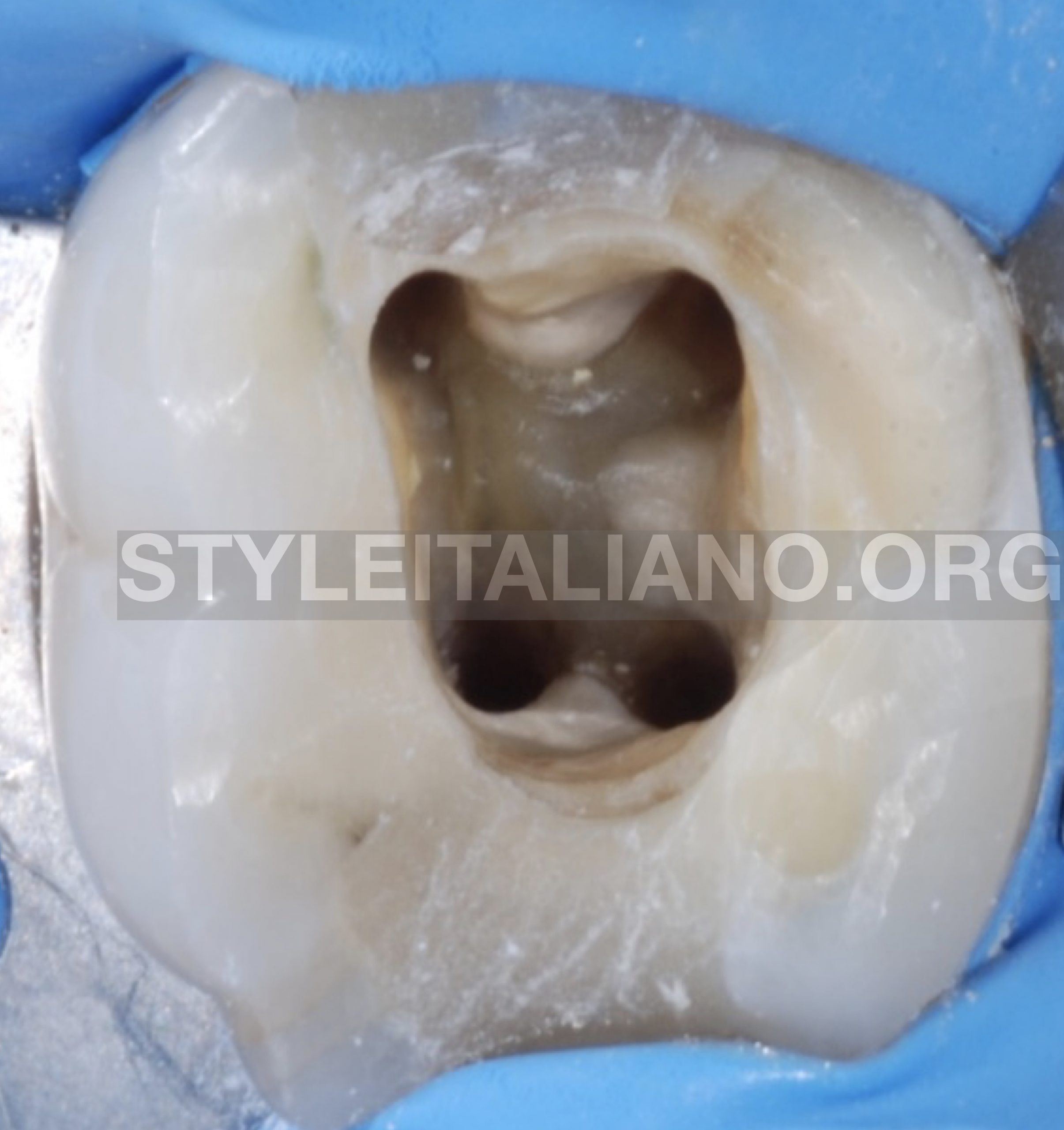
Fig. 2
The retreatment was done in one visit; the picture shows the details of the pulp chamber floor prior to fill the canals with guttapercha

Fig. 3
X-ray after root canal treatment.
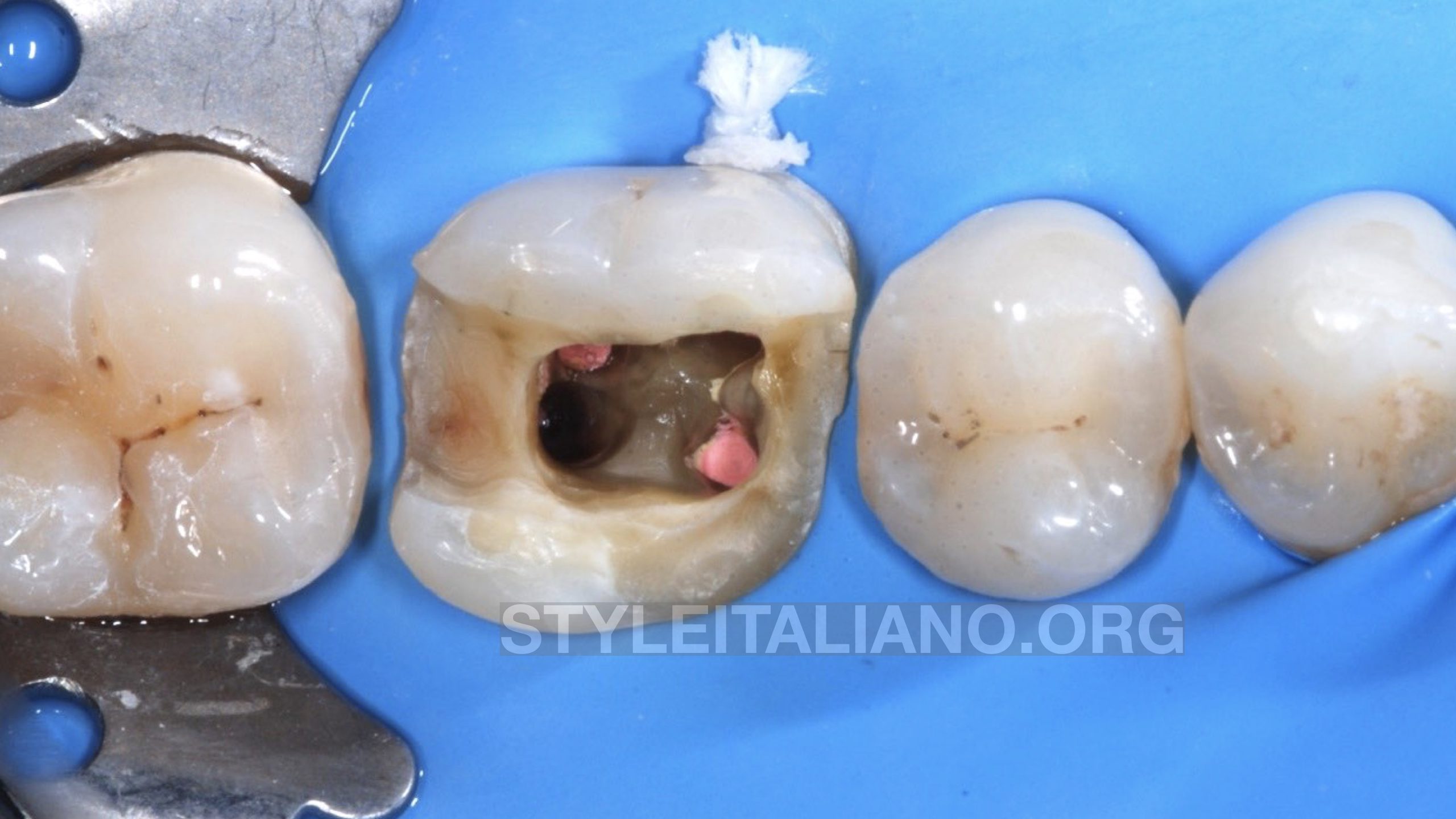
Fig. 4
Multiple tooth isolation was done, in order to do an overlay preparation;
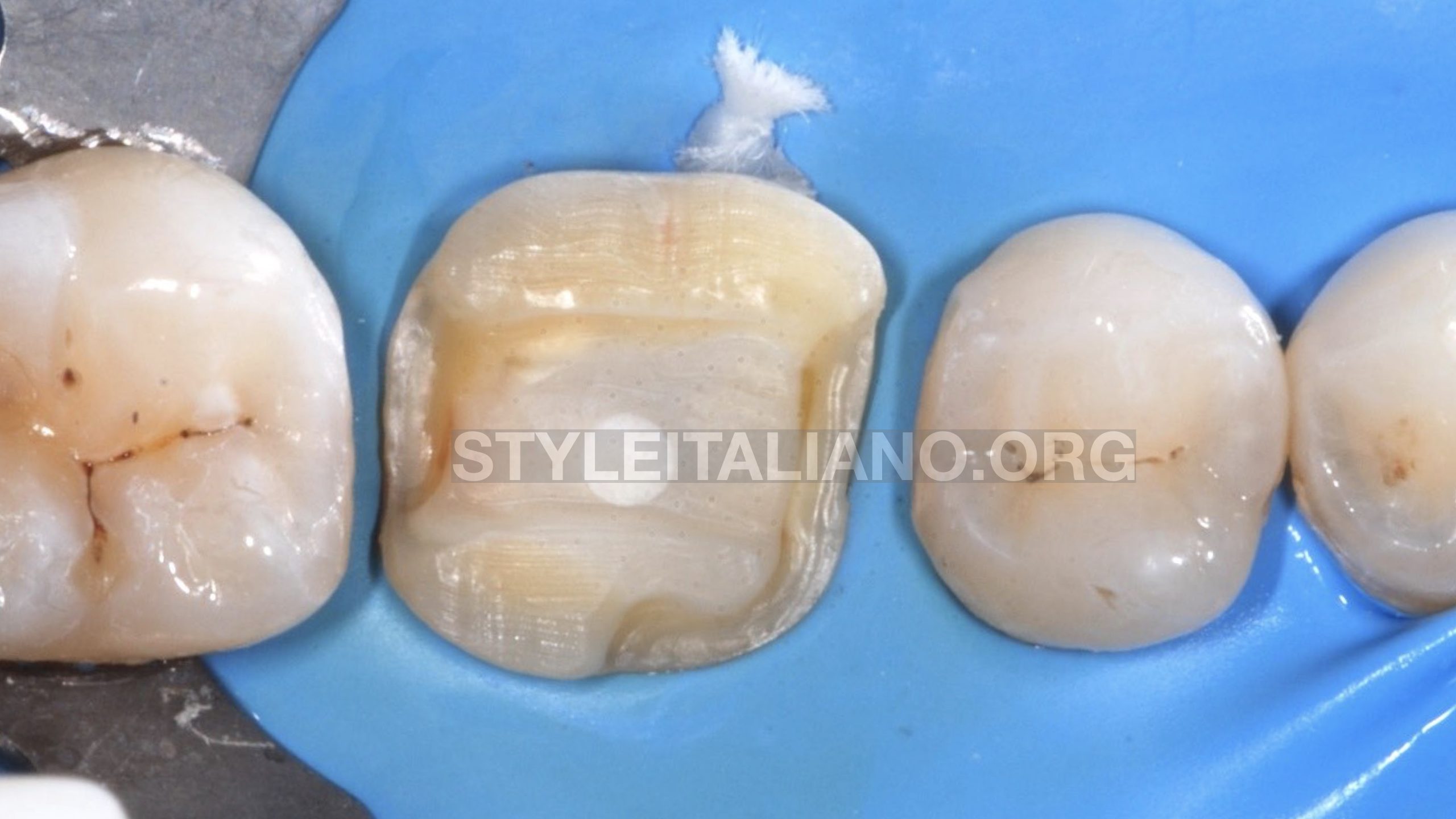
Fig. 5
Overlay preparation
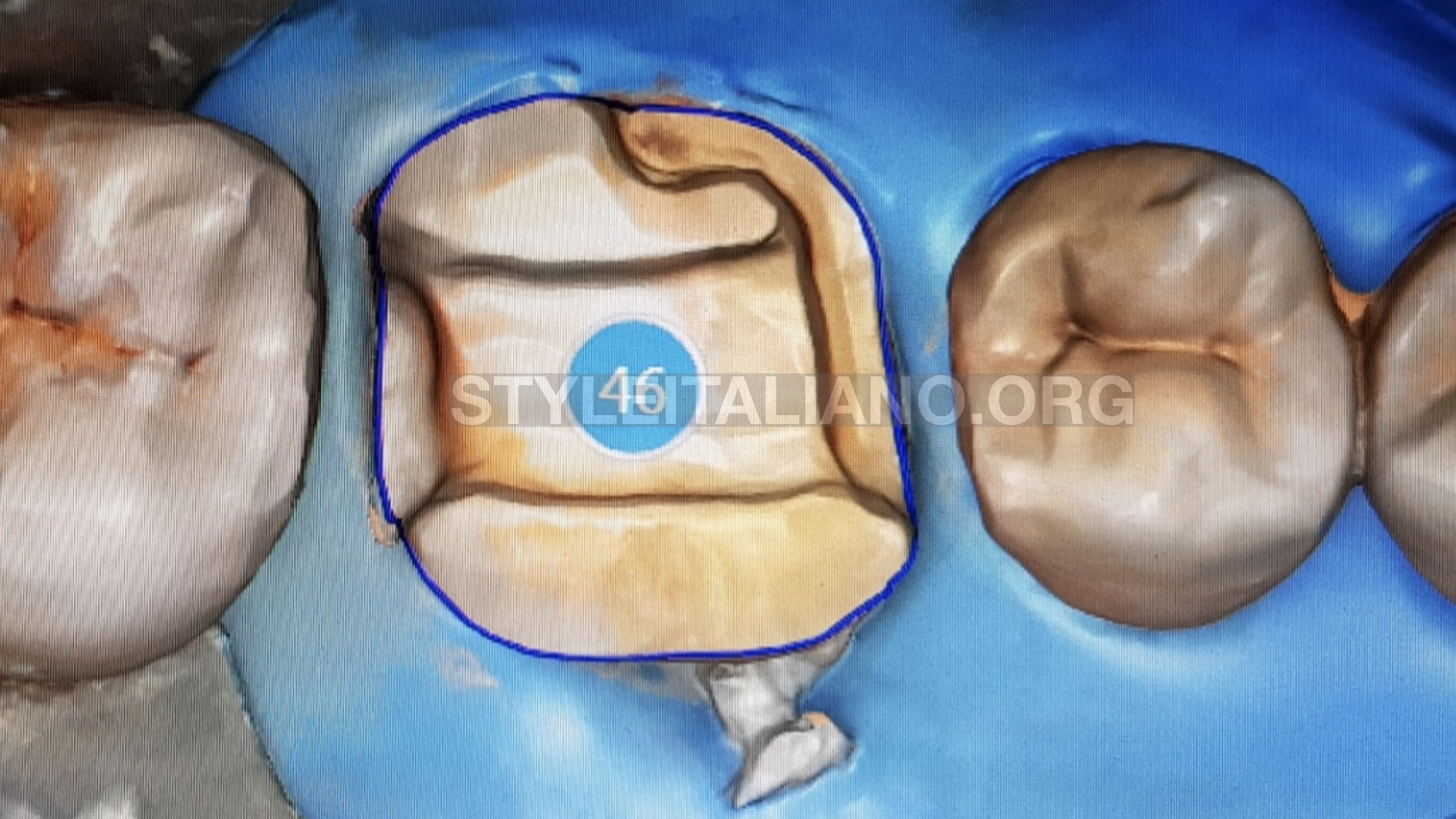
Fig. 6
Digital scanning over the Ruberdam
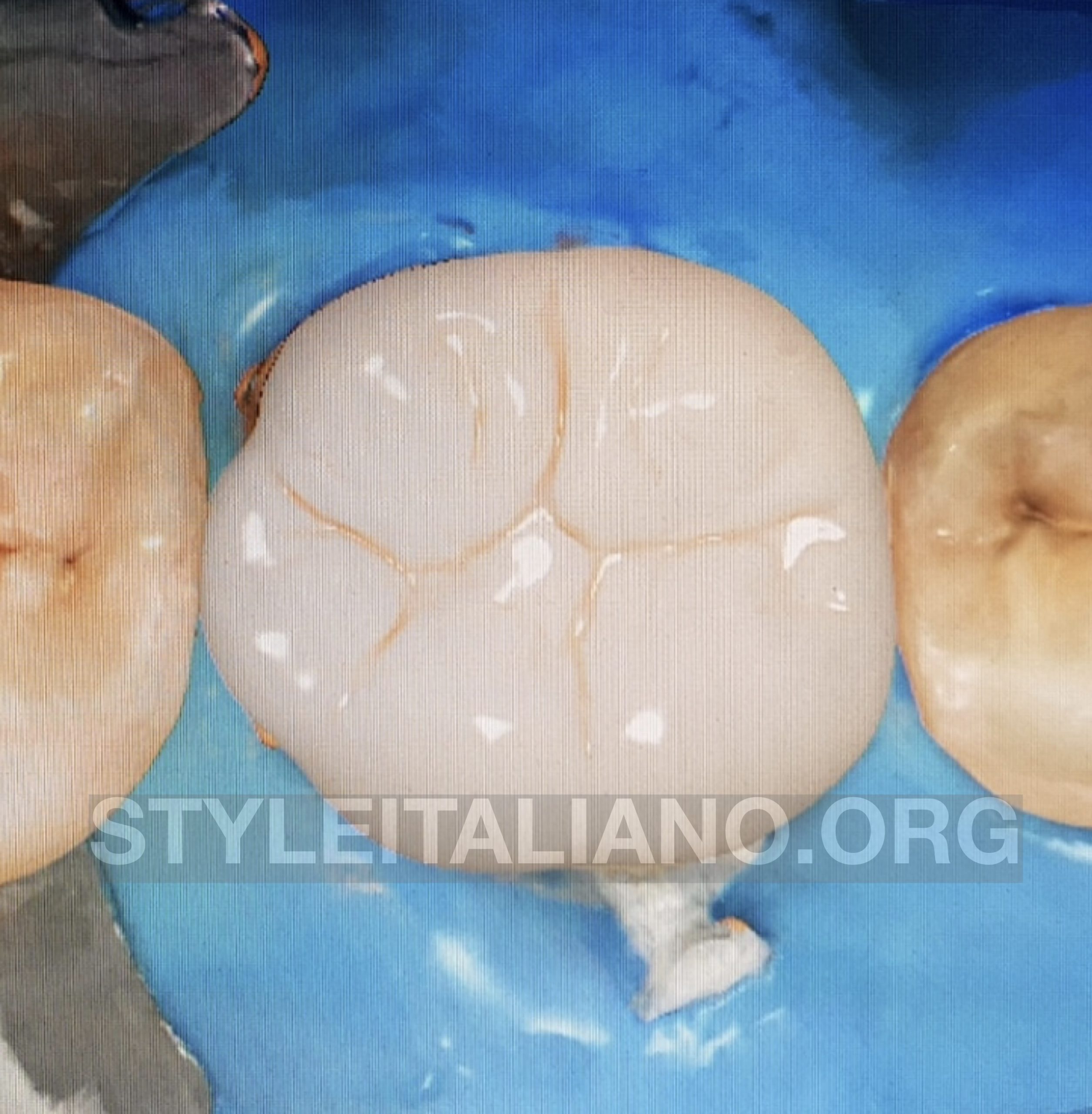
Fig. 7
Occlusal view of the final project
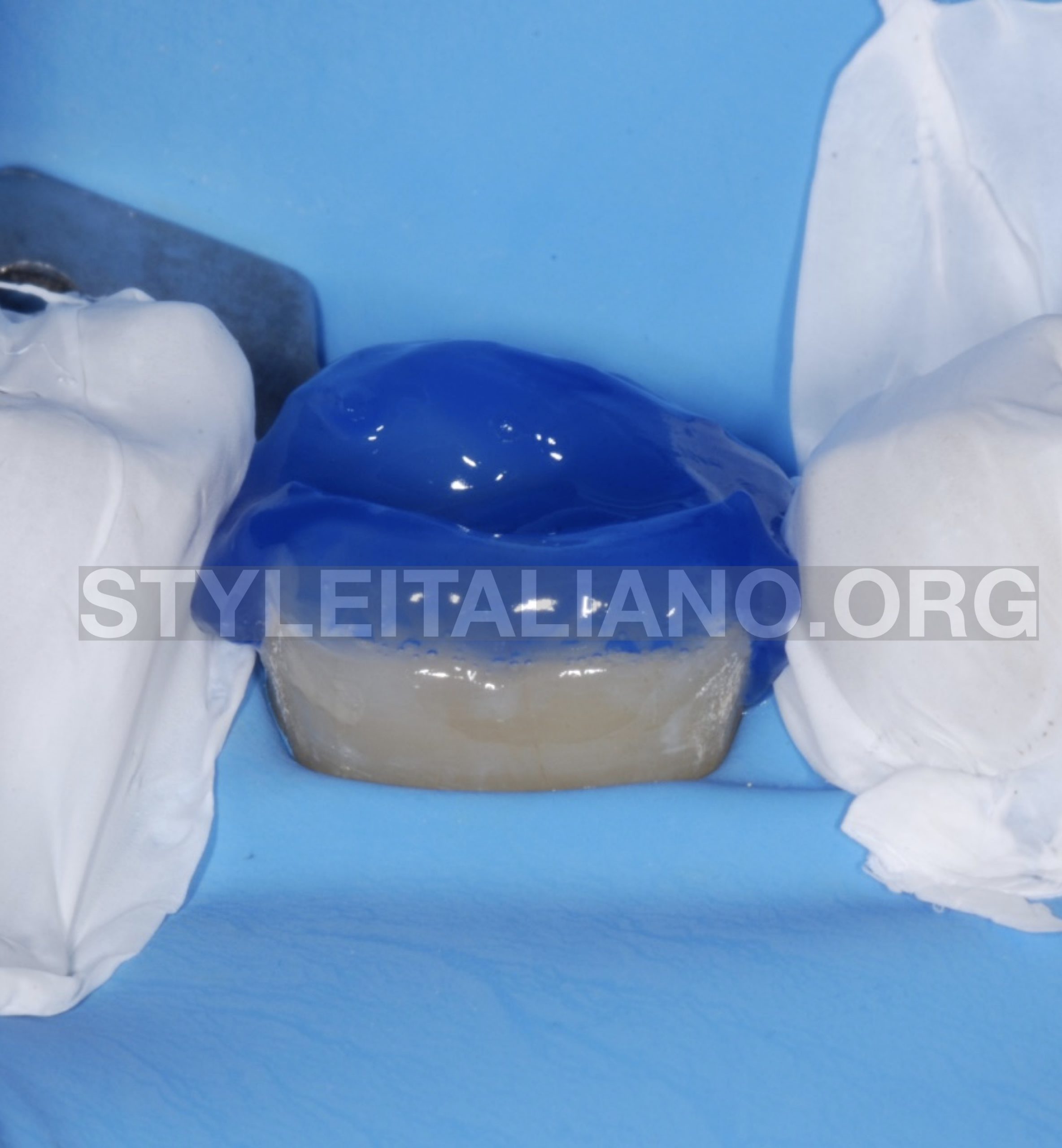
Fig. 8
Etchnig

Fig. 9
Adhesive cementation
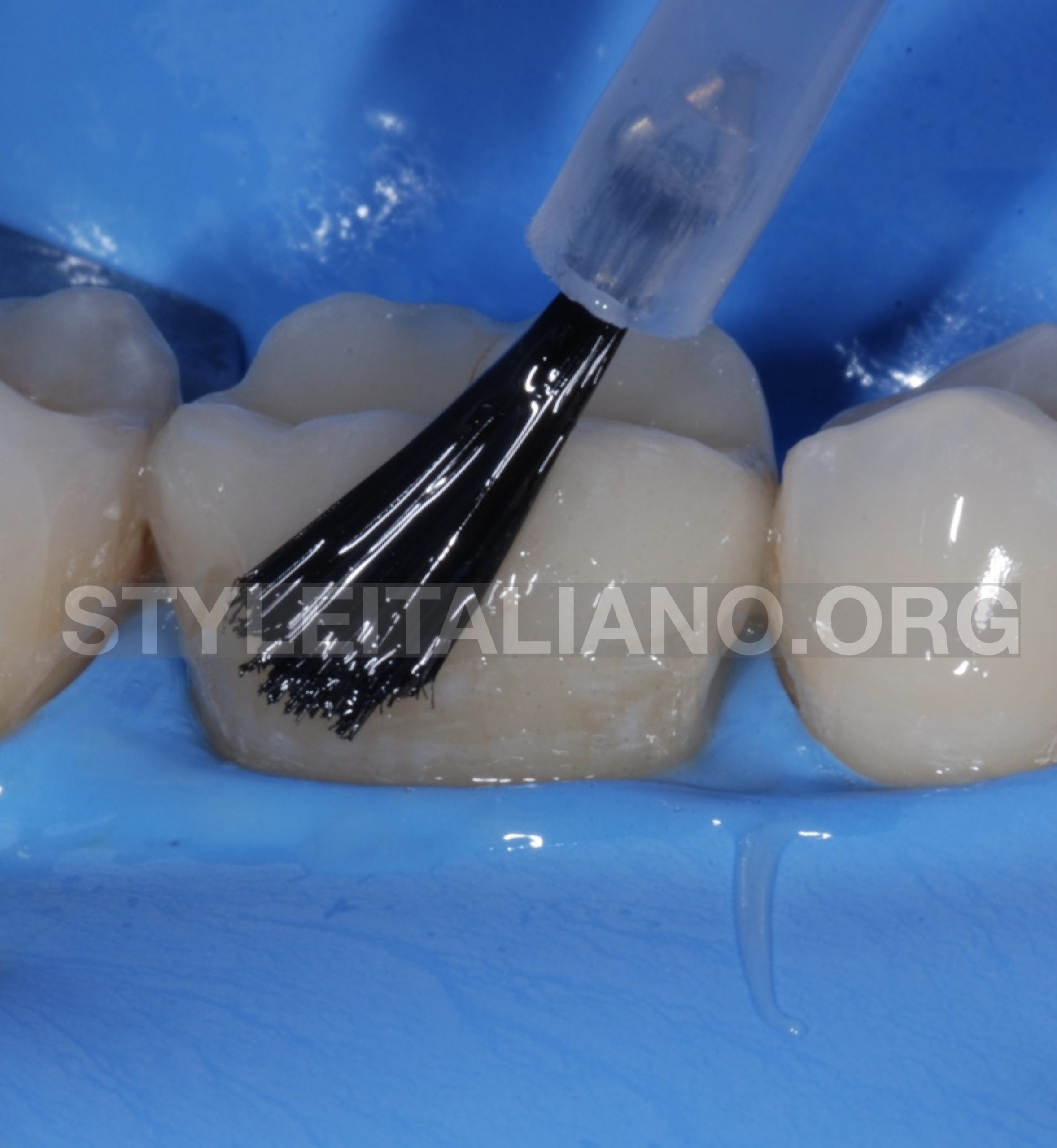
Fig. 10
Removing of cement with brush

Fig. 11
After cementation
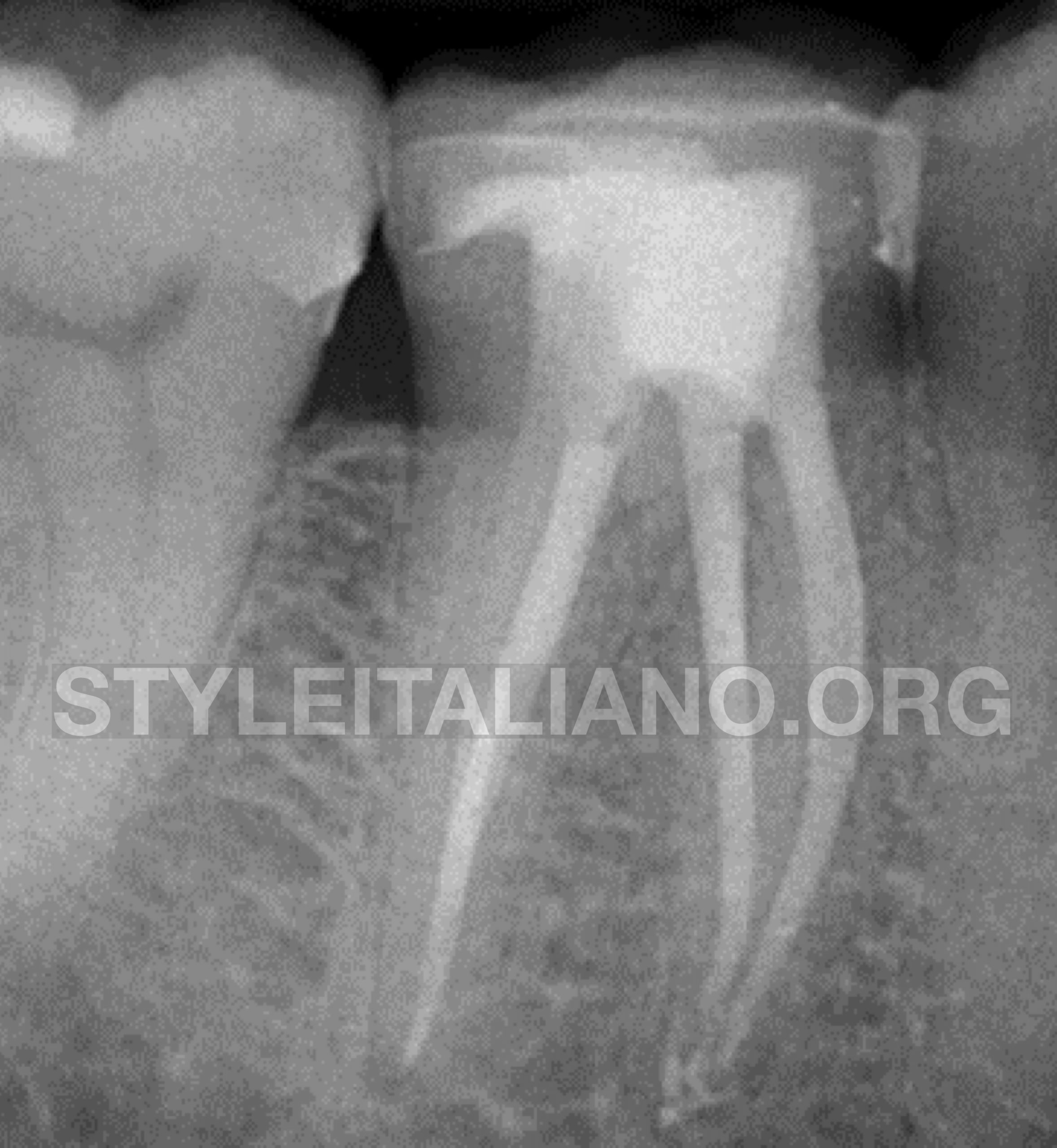
Fig. 12
X-ray after cementation

Fig. 13
Recall after 2 years
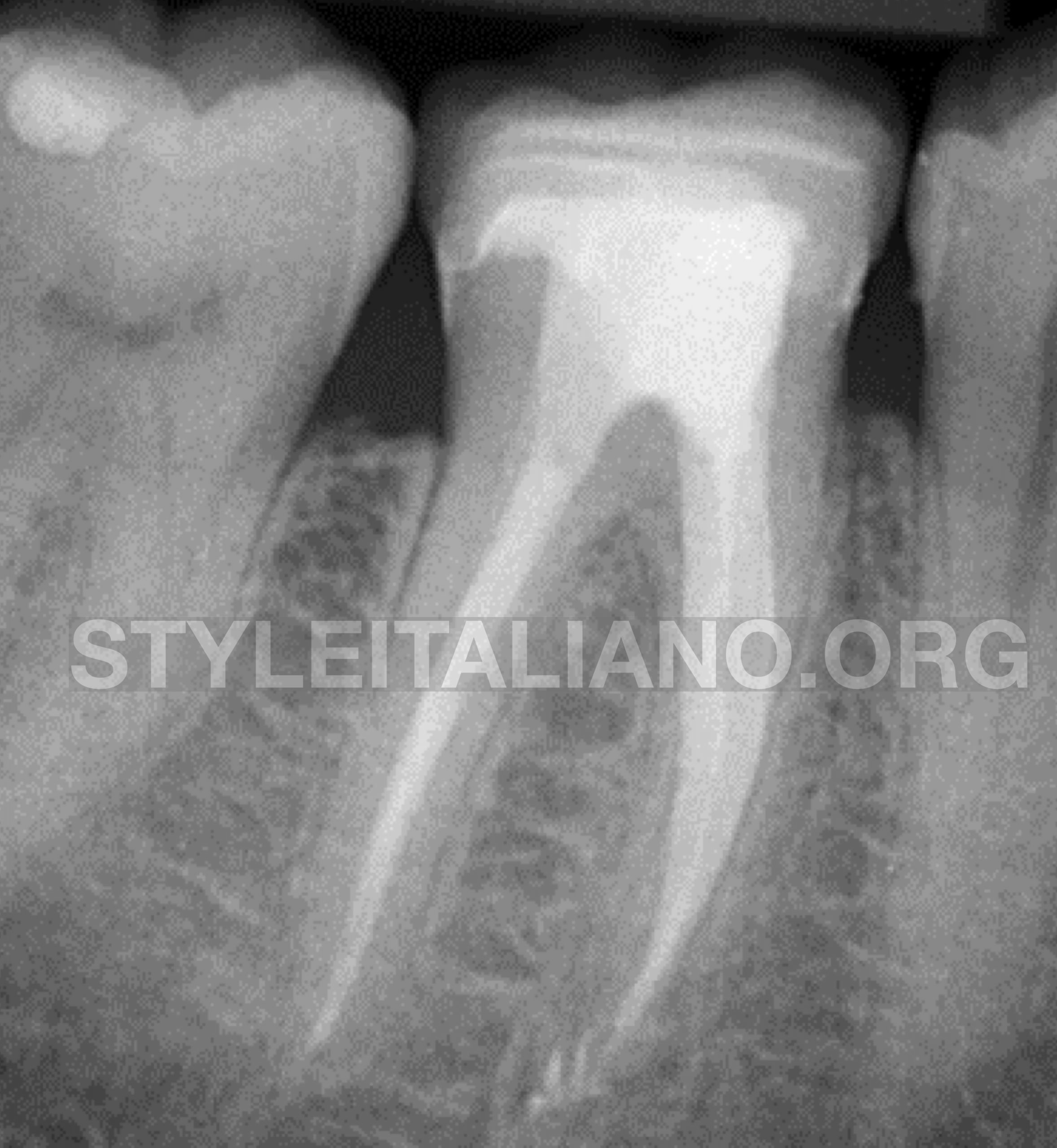
Fig. 14
Recall after 2 years
Conclusions
The indirect restaurations are part of the endodontical treatments. In many cases they are very complex, therefore they have to be well prepared right at the begining of the endodontical treatment.
The indirect restauration has a special importance because the prognosis of the whole tooth depends on it.
Bibliography
- Marco Veneziani/DDS, Posterior indirect adhesive restorations: updated indications and the Morphology Driven Preparation Technique, The international journal of esthetic dentistry 2017
- Brian M.Gillen/DDS et Al, Impact of the quality of coronal restoration versus the quality of root canal fillings on success of root canal treatment : A sistematic review and meta-analysis, JOE 2011
- Alex McLean,DMD,B.Sc, Criteria for the predictably restorable endodontically treated tooth, 1998
- Marco Ferrari, Alessandro Vichi, Simone Grandini, Efficacy of different adhesive techniques on bonding to root canal walls: an SEM investigation, 2000.


